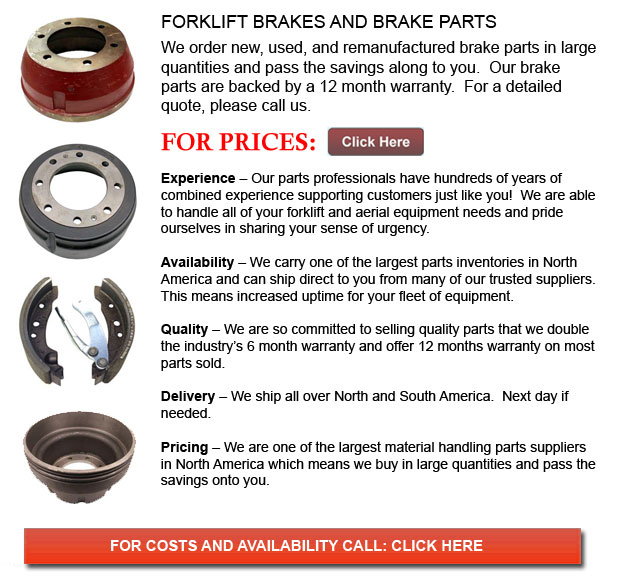
Forklift Brakes - A brake wherein the friction is provided by a set of brake shoes or brake pads which press against a rotating drum unit referred to as a brake drum. There are a few specific differences among brake drum kinds. A "brake drum" is usually the definition provided whenever shoes press on the inner exterior of the drum. A "clasp brake" is the term used so as to describe if shoes press against the outside of the drum. Another kind of brake, known as a "band brake" makes use of a flexible band or belt to wrap all-around the exterior of the drum. Where the drum is pinched in between two shoes, it can be called a "pinch brake drum." Similar to a conventional disc brake, these types of brakes are rather rare.
Prior to the year 1995, early brake drums needed consistent adjustment periodically to be able to compensate for shoe and drum wear. "Low pedal" or long brake pedal travel is the hazardous outcome if modifications are not carried out satisfactorily. The motor vehicle could become dangerous and the brakes can become ineffective if low pedal is combined along with brake fade.
There are several different Self-Adjusting systems used for braking on the market nowadays. They can be classed into two individual categories, the RAD and RAI. RAI systems are built-in systems that help the tool recover from overheating. The most well known RAI makers are Lucas, Bosch, AP and Bendix. The most famous RAD systems consist of Ford recovery systems, Volkswagen, VAG, AP and Bendix.
Self-repositioning brakes generally make use of a mechanism that engages just if the motor vehicle is being stopped from reverse motion. This stopping approach is satisfactory for use where all wheels make use of brake drums. Most vehicles today utilize disc brakes on the front wheels. By functioning only in reverse it is less possible that the brakes will be adjusted while hot and the brake drums are expanded. If adapted while hot, "dragging brakes" can happen, which increases fuel intake and accelerates wear. A ratchet device that becomes engaged as the hand brake is set is another way the self repositioning brakes can work. This means is only suitable in functions where rear brake drums are utilized. When the emergency or parking brake actuator lever goes over a particular amount of travel, the ratchet developments an adjuster screw and the brake shoes move in the direction of the drum.
There is a manual adjustment knob located at the base of the drum. It is usually adjusted through a hole on the other side of the wheel and this requires going beneath the forklift along with a flathead screwdriver. It is of utmost importance to be able to move the click wheel properly and modify each and every wheel evenly. If unequal adjustment happens, the vehicle could pull to one side during heavy braking. The most effective way so as to make sure this tiresome task is completed carefully is to either raise each and every wheel off the ground and hand spin it while measuring how much force it takes and feeling if the shoes are dragging, or give every\each and every one the same amount of clicks manually and then perform a road test.
![]() Click to Download the pdf
Click to Download the pdf
Forklift Parts
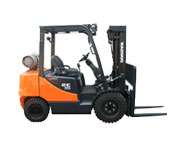
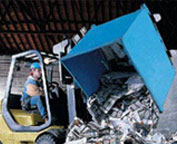
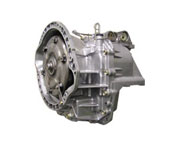
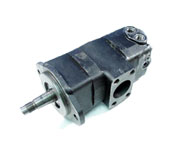
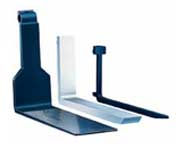
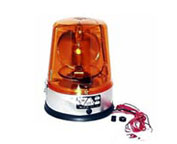
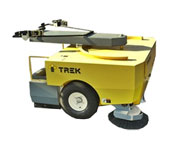
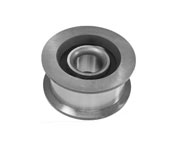
Lift Parts Express
TOLL FREE: 1-888-695-7994
Albany, New York
forkliftpartsalbany.com
Email Us
About Us


